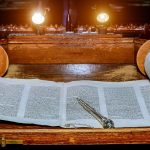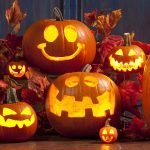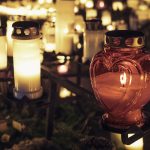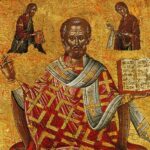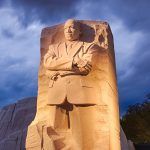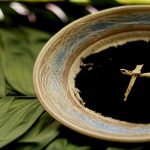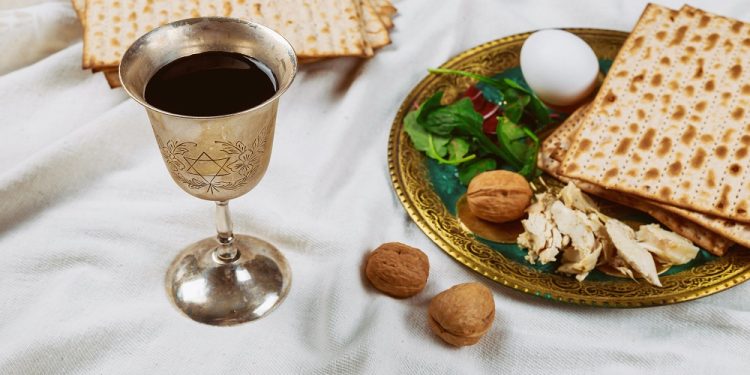
Pesach (Passover)
Pesach, otherwise known as the Jewish Passover, begins on the 15th of the month of Nisan and lasts for 7 days for those living in Israel, or 8 days for Jews outside of Israel, based on the concept of Yom Tov Sheni Shel Galuyot. The purpose of this holiday is to celebrate spring, birth (and rebirth), and the remembrance of being delivered from slavery to freedom.
It’s also a day on which Jews take responsibility for themselves, their communities, and the world at large. The Passover Seder is one of the most widely observed rituals, alongside the biblical prohibition against leavened foods over the course of this holiday, in Judaism.
The History of Pesach
The word Pesach first appears in the Torah’s account of the Exodus from Egypt in Exodus 12:23, and there is some debate as to the meaning of the word. It’s commonly believed that it means “He passed over,” and that this is a reference to God skipping the homes of the Hebrews during the final of the Ten Plagues of Egypt.
It might also refer to the goat or the lamb that was designated as the Passover sacrifice. According to Exodus 12:3, the Hebrews were commanded four days before the Exodus to select a lamb and examine it to make sure that it was blemish-free.
On the 14th day of Nisan, this lamb was to be slaughtered, and its blood was to be used for marking the doorposts and lintels of their homes. On the 15th day of Nisan, they were then ordered to eat the lamb. It’s commonly believed by some scholars that the Passover ritual has its origins in an apotropaic rite that predated the Exodus.
It was a way for people to protect their homes against demonic forces, and hyssop was used to daub the blood of a slaughtered sheep on the doorposts and lintels to prevent these forces from entering the home.
It’s also believed that, as the Priestly Code was widely used, the Exodus took on the central function of the holiday and was combined with the agricultural traditions of the Canaanites, including a ceremony of unleavened bread.
As the Exodus motif gained greater significance, the symbolism and original function of the Canaanite traditions and apotropaic rites were lost. However, not all scholars agree that the two festivals were merged.
Passover in the Bible
According to the Book of Exodus, the Israelites are enslaved in ancient Egypt, and the god of the Israelites, Yahweh, appears to Moses in the form of a burning bush. God commands Moses to confront the Pharaoh. To show the Pharaoh his power, Yahweh inflicts 10 different plagues on the Egyptians.
The plagues include turning the rivers to blood, frogs swarming every inch of the land, lice covering the land, hordes of wild animals destroying everything in their way, a pestilence among the domestic animals of the Egyptians, boils on Egyptians and their animals, hail striking down crops of the field and shattering trees, locusts swallowing up the crops of Egypt, and darkness befalling the land.
The tenth and final plague was the death of the firstborn Egyptian sons. To protect the Israelites, Yahweh commanded Moses to tell his people to mark their doors with lamb’s blood so that the angel of death would leave them unscathed.
The regulations as dictated by the Bible for this holiday include people disposing of all leavened bread before the 15th of Nisan. Before that, on the 10th of Nisan, a goat or lamb has to be selected and set aside. This is the Korban Pesach, also known as the Paschal Lamb. This animal is to be slaughtered at dusk on the 14th of Nisan in preparation for it to be eaten on the 15th of Nisan.
Observing Pesach
One of the most important traditions of Passover is for all observant Jews to remove leavened food products, known as chametz, from their homes before the holiday begins. They also have to refrain from using leavened food products during the duration of Passover.
In place of leavened bread, observant Jews eat a flatbread known as matzo. This is consumed in accordance with the tradition that the Hebrews had to flee Egypt so quickly there was no time for their bread to rise.
The Seder
On the first two nights of Passover, family and friends gather together for a religious feast known as the Seder. During this religious feast, the story of the Exodus is read aloud from the Haggadah. Rituals corresponding to various aspects of the story are performed as well. Below is an overview of the rituals for the Passover Seder.
- Kadeish: This is the recital of the Kiddush blessing, followed by the drinking of the first cup of wine.
- Urchatz: This is the washing of the hands ritual.
- Karpas: Dipping the karpas (parsley or celery) in saltwater.
- Yachatz: During Yachatz, the breaking of the middle of the three matzahs, the larger portion is hidden as the afikoman.
- Maggid: Retelling the Passover story and drinking of the second cup of wine.
- Rachtzah: Second washing of the hands.
- Motzi: The matzo blessing is recited before eating the matzo.
- Maror: Eating of the maror, which represents the bitterness of slavery.
- Koreich: Eating a sandwich made of matzo and maror.
- Shulchan: Literally means “The set table.”
- Tzafun: Eating of the afikoman.
- Barēkh: Blessing after the meal and drinking of the third cup of wine.
- Hallel: Recital of the Hallel, traditionally recited on festivals; drinking of the fourth cup of wine.
- Nirtzah: The end of the Seder.
Although there are communal Seders that are organized by community centers, synagogues, and schools, the Seder is one that’s conducted in the family’s home. It’s integral to Jewish identity and faith. It’s believed that without divine intervention, the Jews would still be enslaved in Egypt, so it’s a day to give praise to Yahweh and as a day of thanksgiving.
The Seder table is traditionally set with the finest silverware and place settings, and members of the family come to the table dressed in their finest holiday clothing. Traditionally, the person leading the Seder will wear a white robe known as a kittel. During the first half of the Seder, every person at the table will only need a wine glass and a plate.
The Seder plate is at the head of the table and contains the symbolic foods that will be talked about or eaten during the course of the meal. Nearby, matzot and dishes of salt water for dipping are waiting. Everyone who is participating in the Seder gets a copy of the Haggadah—an ancient text that contains the entire service of the Seder.
In some homes, every person at the Seder table will recite parts of the Haggadah in the original Aramaic and Hebrew. In Israel, one Seder is observed on the first night of Passover. In Diaspora communities, some Jews hold a Seder on a second night as well.
One of the main symbols of Passover is matzo. This unleavened flatbread is made from only flour and water. The Torah contains specific instructions for eating only unleavened bread and eating matzo. Matzo has been called Lechem Oni in Hebrew, meaning “the bread of poverty.”
The eating of the maror represents the bitterness of the Jews’ slavery in Egypt. There are different types of maror, including romaine lettuce, grated horseradish, or whole horseradish root.
There is a Rabbinic requirement that four cups of wine are to be drunk over the course of the Seder. This applies equally to both men and women seated at the table. Each of these four cups is connected to a different part of the Seder. The first cup is connected to Kiddush.
The second cup is connected to the recounting of the Exodus. The third cup ends Birkat Hamazon, and the final cup is associated with Hallel. Traditionally, children have an important role in the Passover Seder.
The youngest child asks questions about the Seder, beginning with Mah Nishtana HaLaila HaZeh (“Why is this night different from other nights?”). This encourages other people to take part in the symbolism of the meal. Other questions asked by the child may include:
“On all other nights, we eat either unleavened or leavened bread, but tonight we eat only unleavened bread?” “On all other nights, we eat all kinds of vegetables, but tonight, we eat only bitter herbs?” “On all other nights, we do not dip even once, but tonight we dip twice?” “On all other nights, we eat either sitting or reclining, but tonight we only recline?”
Another part of the Seder that encourages investment from the children at the table is the afikoman. During Yachatz, the fourth part of the Seder, the one leading the dinner breaks the middle piece of matzo into two parts.
He then sets the larger portion aside as the afikoman. This is hidden, and then a prize is offered for its return. The afikoman is then consumed during the twelfth part of the Seder, known as Tzafun.
The End of the Seder
After the fourth glass of wine is consumed, a prayer is then recited. This is followed by several prayers that expound on the mercies and kindness of God and that also give thanks for the survival of the Jewish people through all of the hardships they’ve had to endure.
After the Seder, several songs are sung. Some of these, such as Chad Gadya, are allegorical in nature, while others, such as Echad Mi Yodea, are designed to test the knowledge of the people at the table.

